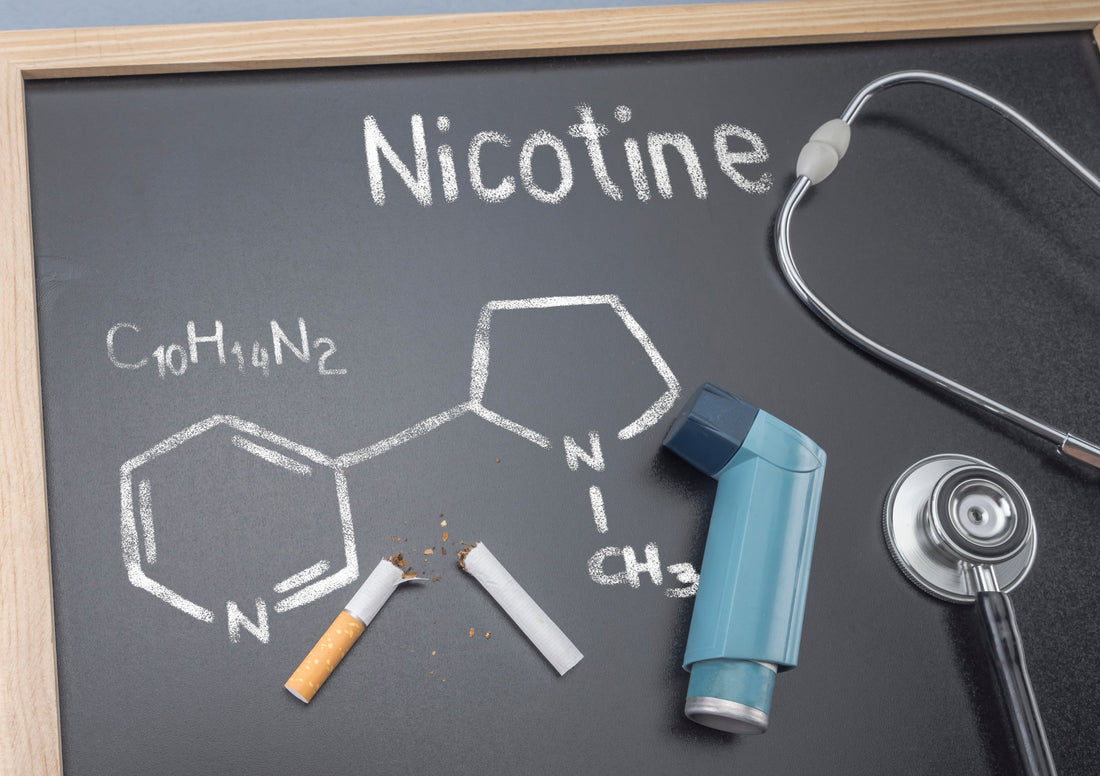
How to Reduce Nicotine Without Stress or Frustration
Share
You don’t have to suffer to take control of your nicotine use. Many smokers believe quitting has to be a battle of willpower, but science says otherwise. Your body and mind can adapt smoothly when you make gradual, intelligent changes — and with the right support, the process becomes far less painful.
This guide explains how to reduce nicotine step by step, combining neuroscience, respiratory balance, and motivation. It’s not about perfection — it’s about progress and freedom.
Understand What Nicotine Does to Your Brain
Nicotine stimulates your brain’s dopamine system, which creates the sense of satisfaction you feel after smoking. Over time, your brain depends on that external dopamine boost, which is why sudden withdrawal can lead to irritability, anxiety, and brain fog.
Research indicates that gradual reduction keeps dopamine more stable and lowers the risk of relapse. Each time you smoke with less nicotine exposure, your brain learns to regulate dopamine more naturally again.
That’s where tools like Smart-Filters™ help — they physically reduce impurities and nicotine exposure while preserving your familiar draw and flavor. Instead of shocking your brain, you’re retraining it to function freely.
Balance Your Nervous System During the Transition
When nicotine drops, your body can enter a hyper-alert state driven by the sympathetic nervous system (fight-or-flight). The key is to reactivate the parasympathetic system — your built-in calm and recovery mode.
Use small daily actions:
- 4-7-8 breathing: inhale 4 seconds, hold 7, exhale 8 — supports lower cortisol and steadier heart rate.
- Hydration: detox works better when cells stay hydrated.
- 10-minute walks or light stretching: gentle movement releases endorphins that can replace the nicotine “lift.”
Pair your breathing practice with the Aerya™ Breathing Necklace to anchor a calm rhythm and a pleasant scent during cravings.
Support Your Body’s Natural Detox
Within hours of reducing nicotine and smoke intake, your body starts clearing carbon monoxide. After roughly 72 hours, the lungs begin to expel mucus and your airway cilia — tiny “brushes” that help keep lungs clean — start to recover. Circulation and lung capacity can improve over the following weeks when exposure remains lower.
To help this process:
- Increase vitamin C, magnesium, and chlorophyll-rich foods (citrus, leafy greens, spirulina).
- Consider gentle respiratory herbs like mullein and ginger.
- Protect your sleep window — detox and neurochemical balance improve during deep sleep.
Focus on Reduction, Not Restriction
It’s not about deprivation — it’s about re-programming. People who reduce gradually are often more likely to succeed long-term than those attempting to quit overnight.
With Smart-Filters™, you follow your normal routine — lighting, inhaling, exhaling — but each cigarette contains less of what harms you. You maintain control, not guilt. That mindset shift is powerful.
Replace your usual cigarettes with Smart-Filters™ for 10 days. Track cravings, mood, and breathing. Add two 3-minute breathing sessions with the Aerya™ Breathing Necklace. Many users report easier sleep and lighter breathing within the first week. For extra urge control, try gentle Acupressure Ear Magnets.
Common Questions
Q: Can reducing nicotine really help me quit?
A: Yes. Lowering intake gradually allows your brain to recalibrate dopamine sensitivity with fewer withdrawal spikes, improving your long-term success odds.
Q: What should I do during strong cravings?
A: Pair slow exhalations with a sensory anchor. Use the Aerya™ Breathing Necklace for rhythm, or apply light pressure with Acupressure Ear Magnets at the ear reflex point to reduce urge intensity within a minute.
